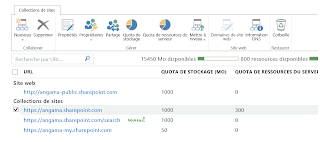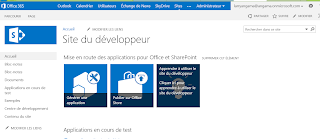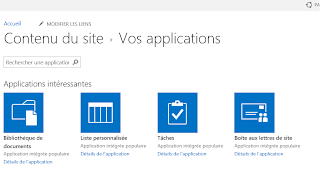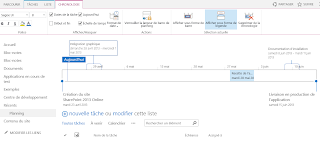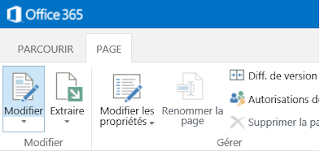webApplication URL
CSV file path
Group Term Name
In order to set the managed metadata Navigation you have to set the option in "Navigation" menu.
Param(
[Parameter(Mandatory=$True,Position=1)]
[string]$WebAppUrl,
[Parameter(Mandatory=$True,Position=2)]
[string]$CSVFilePath,
[Parameter(Mandatory=$True,Position=3)]
[string]$TermGroupName
)
Add-PSSnapin Microsoft.SharePoint.PowerShell -erroraction SilentlyContinue
function ImportTermSet([Microsoft.SharePoint.Taxonomy.TermStore]$store, [string]$groupName, [PSCustomObject]$termSet) {
function ImportTerm([Microsoft.SharePoint.Taxonomy.Group]$group,
[Microsoft.SharePoint.Taxonomy.TermSet]$set,
[Microsoft.SharePoint.Taxonomy.Term]$parent,
[string[]]$path) {
if ($path.Length -eq 0) {
return
}
elseif ($group -eq $null)
{
$group = $store.Groups | where { $_.Name -eq $path[0] }
if ($group -eq $null)
{
$group = $store.CreateGroup($path[0])
}
}
elseif ($set -eq $null)
{
$set = $group.TermSets | where { $_.Name -eq $path[0] }
if ($set -eq $null)
{
$set = $group.CreateTermSet($path[0])
}
$set.SetCustomProperty("_Sys_Nav_IsNavigationTermSet", "True")
}
else
{
$node = if ($parent -eq $null) { $set } else { $parent }
$parent = $node.Terms | where { $_.Name -eq $path[0] }
if ($parent -eq $null -and $path -ne $null -and $path[0] -ne $null) {
$parent = $node.CreateTerm($path[0], 1036)
#Debut Menu
if($_.MenuID -ne "" -and $parent -ne $null )
{
$parent.SetLocalCustomProperty("Menu ID", $_.MenuID)
}
if($_.Menu_Particulier -ne "" -and $parent -ne $null )
{
$parent.SetLocalCustomProperty("Menu Particulier", $_.Menu_Particulier)
}
if($_.Menu_Professionnel -ne "" -and $parent -ne $null )
{
$parent.SetLocalCustomProperty("Menu Professionnel", $_.Menu_Professionnel)
}
if($_.SousTitre -ne "" -and $parent -ne $null )
{
$parent.SetLocalCustomProperty("Sous Titre", $_.SousTitre)
}
if($_.TitreAccueil -ne "" -and $parent -ne $null )
{
$parent.SetLocalCustomProperty("Titre accueil", $_.TitreAccueil)
}
if($_.SousTitreAccueil -ne "" -and $parent -ne $null )
{
$parent.SetLocalCustomProperty("Sous titre accueil", $_.SousTitreAccueil)
}
if($_.Picto -ne "" -and $parent -ne $null )
{
$parent.SetLocalCustomProperty("Picto", $_.Picto)
}
#Fin Menu
#Debut colonne
if($_.ColonneID -ne "" -and $parent -ne $null )
{
$parent.SetLocalCustomProperty("Colonne ID", $_.ColonneID)
}
if($_.ClasseTitreColonne -ne "" -and $parent -ne $null )
{
$parent.SetLocalCustomProperty("Classe titre colonne", $_.ClasseTitreColonne)
}
if($_.TitreColonne -ne "" -and $parent -ne $null )
{
$parent.SetLocalCustomProperty("Titre colonne", $_.TitreColonne)
}
#Fin colonne
#Debut lien
if($_.LienID -ne "" -and $parent -ne $null )
{
$parent.SetLocalCustomProperty("Lien ID", $_.LienID)
}
if($_.SousTitreLien -ne "" -and $parent -ne $null )
{
$parent.SetLocalCustomProperty("Sous titre lien", $_.SousTitreLien)
}
#Fin lien
#Debut rubrique
if($_.RubriqueID -ne "" -and $parent -ne $null )
{
$parent.SetLocalCustomProperty("Rubrique ID", $_.RubriqueID)
}
if($_.BaliseRubriqueIcon -ne "" -and $parent -ne $null )
{
$parent.SetLocalCustomProperty("Balise rubrique icone", $_.BaliseRubriqueIcon)
}
if($_.ClasseIconRubrique -ne "" -and $parent -ne $null )
{
$parent.SetLocalCustomProperty("Classe icone rubrique", $_.ClasseIconRubrique)
}
if($_.TitreIcon -ne "" -and $parent -ne $null )
{
$parent.SetLocalCustomProperty("Titre icone", $_.TitreIcon)
}
if($_.SousTitreIcon -ne "" -and $parent -ne $null )
{
$parent.SetLocalCustomProperty("Sous titre icone", $_.SousTitreIcon)
}
if($_.ClasseLien -ne "" -and $parent -ne $null )
{
$parent.SetLocalCustomProperty("Classe lien", $_.ClasseLien)
}
if($_.TitreLien -ne "" -and $parent -ne $null )
{
$parent.SetLocalCustomProperty("Titre lien", $_.TitreLien)
}
if($_.EmphaseTitre -ne "" -and $parent -ne $null )
{
$parent.SetLocalCustomProperty("Emphase titre", $_.EmphaseTitre)
}
if($_.ParentRubriqueID -ne "" -and $parent -ne $null )
{
$parent.SetLocalCustomProperty("Parent rubrique ID", $_.ParentRubriqueID)
}
if($_.ClasseSousTitre -ne "" -and $parent -ne $null )
{
$parent.SetLocalCustomProperty("Classe sous titre", $_.ClasseSousTitre)
}
if($_.ClasseParagrapheEnglobantLien -ne "" -and $parent -ne $null )
{
$parent.SetLocalCustomProperty("Classe paragraphe englobant lien", $_.ClasseParagrapheEnglobantLien)
}
#Fin rubrique
if($_.Ordre -ne "" -and $parent -ne $null )
{
$parent.SetLocalCustomProperty("Ordre", $_.Ordre)
}
if($_.ClasseCSS -ne "" -and $parent -ne $null )
{
$parent.SetLocalCustomProperty("Classe CSS", $_.ClasseCSS)
}
if($_.Visible -ne "" -and $parent -ne $null )
{
$parent.SetLocalCustomProperty("Visible", $_.Visible)
}
if($_.Type -ne "" -and $parent -ne $null )
{
$parent.SetLocalCustomProperty("Type", $_.Type)
}
if($_.PlanSite -ne "" -and $parent -ne $null )
{
$parent.SetLocalCustomProperty("PlanSite", $_.PlanSite)
}
}
}
ImportTerm $group $set $parent $path[1..($path.Length)]
Commit $store 2>&1 | out-null
}
function RemoveTermGroup([Microsoft.SharePoint.Taxonomy.TermStore]$store, [string]$groupName) {
$group = $store.Groups | where { $_.Name -eq $groupName }
if ($group -ne $null) {
$group.TermSets | foreach { $_.Delete() }
$group.Delete()
$store.CommitAll()
}
}
function Commit($store) {
$store.CommitAll()
}
$termSetName = $termSet[0]."Term Set Name"
$termSet | where { $_."Level 1 Term" -ne "" } | foreach {
$path = @($groupName, $termSetName) + @(for ($i = 1; $i -le 5; $i++) {
$term = $_."Level $i Term"
if ($term -eq "") {
break
} else {
$term
}
}
)
ImportTerm -path $path
$ErrorActionPreference = "Continue";
}
}
$session = [Microsoft.SharePoint.Publishing.Navigation.TaxonomyNavigation]::CreateTaxonomySessionForEdit($web)
$store = $session.TermStores[0]
$termSet = Import-csv $CSVFilePath
ImportTermSet $store $TermGroupName $termSet
$store.CommitAll()




